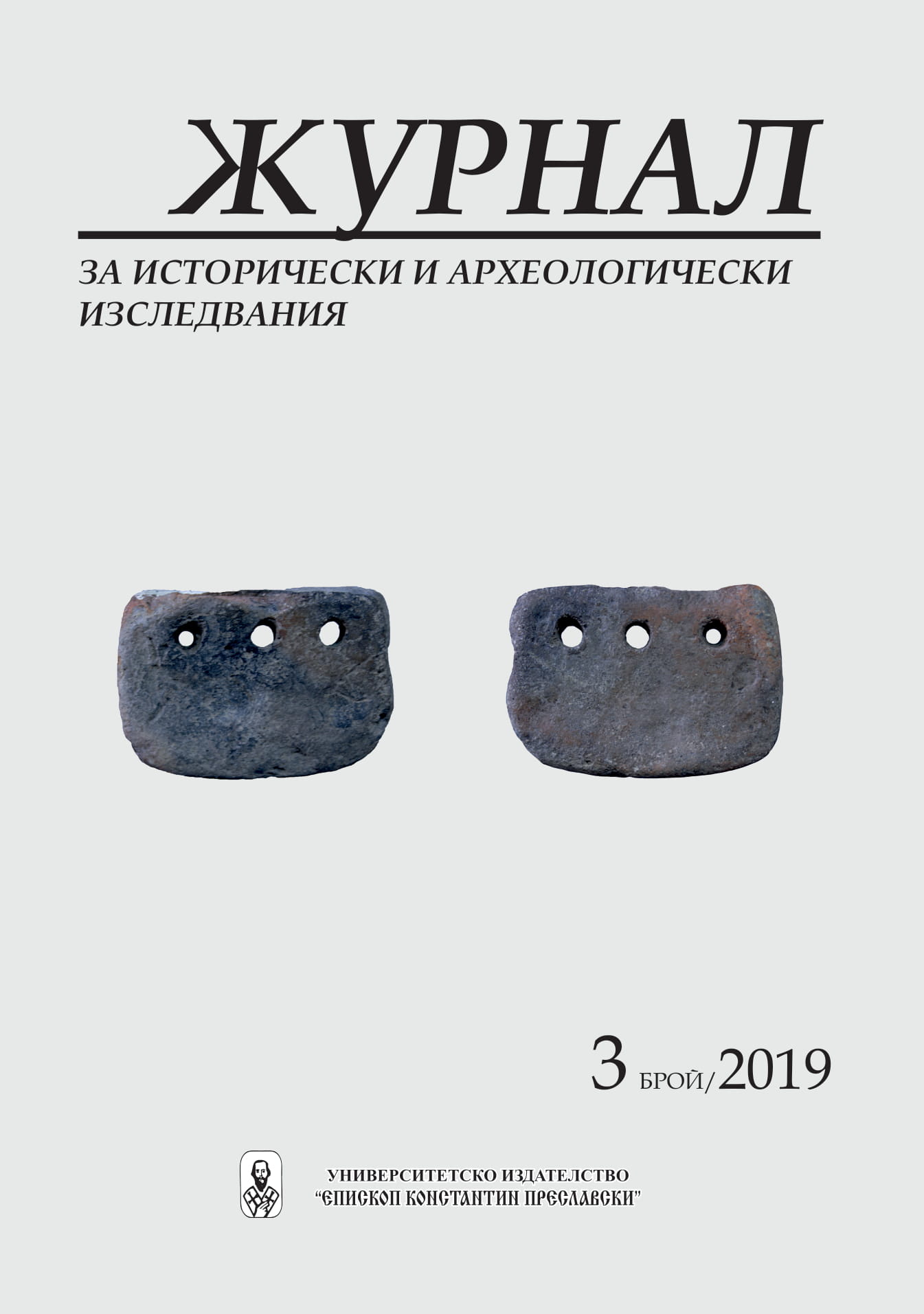Монети от разкопките на Русенската селищна могила
Coins from excavations of Rousse Tell
Author(s): Varbin VarbanovSubject(s): History, Economic history
Published by: Шуменски университет »Епископ Константин Преславски«
Keywords: Coins;excavations;Rousse Tell
Summary/Abstract: Rousse tell is located about 5 km Northeast of the late Roman fortress Sexaginta Prista. It is an important chalcolithic settlement and one of the few studied prehistoric sites in Bulgaria. It was found that it was inhabited during the Chalcolithic, Bronze, Iron, Roman and Late Roman periods.The late periods of its inhabitation have not been published, except some individual findings. According to them, it can be concluded that the Tell was inhabited in the late Hellenistic and early Roman periods (2nd c. BC – 1st c. AD). On it is situated a Roman settlement structure from 2nd-3rd century, on which is located a guard tower (burgus). This is probably the presidium mentioned in the inscription from the time of the Diocletian, which functioned until the end of the 4th century. In addition to the excavated findings from the Roman period, there are also 12 coins published: 2 denarii of Severus Alexander, 2 antoniniani of Gordian III and one antoninianus of each Herennia Etruscilla, Aurelian and Probus; 4 provincial bronze coins – of Septimius Severus, Caracalla, Geta and Macrinus (Nicopolis ad Istrum) and Elagabalus (Marcianopolis) and 1 coin of Ivan Alexander.The coins were published without illustrations or technical data. They were not cataloged, the inscriptions of the obverse and the reverse are not presented. This makes their re-publishing necessary and also, allows their comparison with the coins discovered during the excavation in Sexaginta Prista. During the excavations (between 1976-1978 and 2005-2018) there were found 1286 coins, from 5th century B.C. to modern times.
Journal: Журнал за исторически и археологически изследвания
- Issue Year: 2019
- Issue No: 3
- Page Range: 83-90
- Page Count: 8
- Language: Bulgarian

